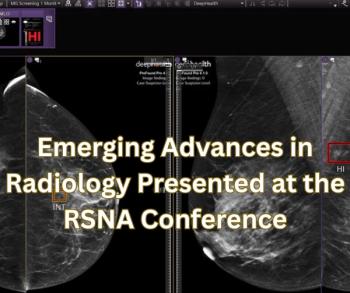
Siemens mobile PET/CT features LSO detectors
Design balances weight, size, cost, and speedMobile imaging played a key role in building the early popularity of CT, MR, and PET. It may soon do the same for PET/CT, making hybrids available to those who lack the budget or
Design balances weight, size, cost, and speed
Mobile imaging played a key role in building the early popularity of CT, MR, and PET. It may soon do the same for PET/CT, making hybrids available to those who lack the budget or conviction to invest in a stationary unit. Siemens Medical Solutions introduced its biograph PET/CT at the RSNA meeting in a configuration optimized for clinical use and mobility.
"Our strategy is to seek out established mobile vendors who are looking to provide a clear differentiation in the markets they serve," said Jonathan Frey, manager of PET marketing and sales support for Siemens Nuclear Medicine Group (Hoffman Estates, IL).
The system includes an Ecat Accel PET scanner outfitted with lutetium oxyorthosilicate (LSO) detectors and a Somatom Emotion dual-slice CT. The lightweight mobile biograph features a small footprint and is designed for economical operation and high patient throughput, according to the company. While the CT performance is a far cry from the 16-slice capability of Siemens's flagship Sensation system, it is considered adequate for a mobile product.
The LSO-based detectors built into the biograph mobile system enable operators to handle about twice the number of patients as competing PET/CTs with less sensitive detectors, according to Randy Weatherhead, Siemens vice president of sales and marketing for nuclear medicine and PET. Throughput is a critical consideration for mobile systems, which often must image as many patients as possible before being transported to a new site.
"Mobile operators want to do a lot of patients in a day for economic reasons, and with this system they can," he said.
The biograph, configured for mobile operation, sells for $2.2 million to $2.3 million, and the coach adds another $350,000 to $400,000. Siemens hopes to sell up to 20 units in 2003. The mobile biograph will begin shipping in January 2003.
The new configuration includes a 70-cm continuous patient port for flexible patient positioning, a fixed fulcrum, and a cantilevered patient bed to ensure registration accuracy. The weight limit goes up to 450 pounds.
Other features include a scan room shielded on all four sides, dual environmental controls, dual slide outs that facilitate an efficient use of space, technologist-friendly transport restraints that secure the system for travel, and a patient viewing window. The biograph is compatible with most existing sites and can be housed in a 48-foot trailer that provides modern scan, operator, and front rooms.
Newsletter
Stay at the forefront of radiology with the Diagnostic Imaging newsletter, delivering the latest news, clinical insights, and imaging advancements for today’s radiologists.




























